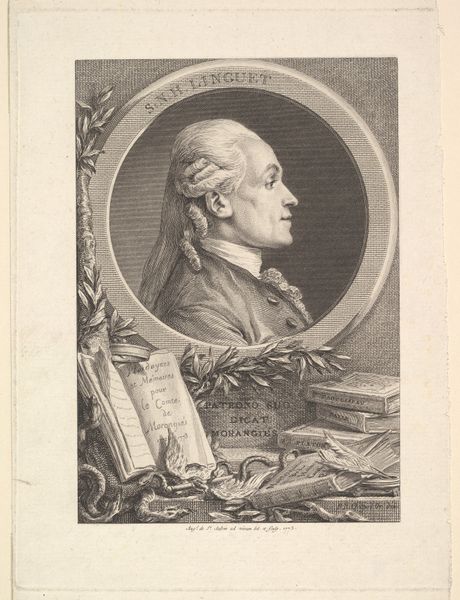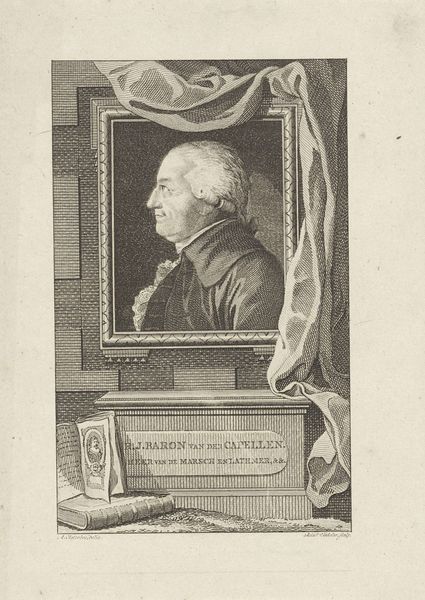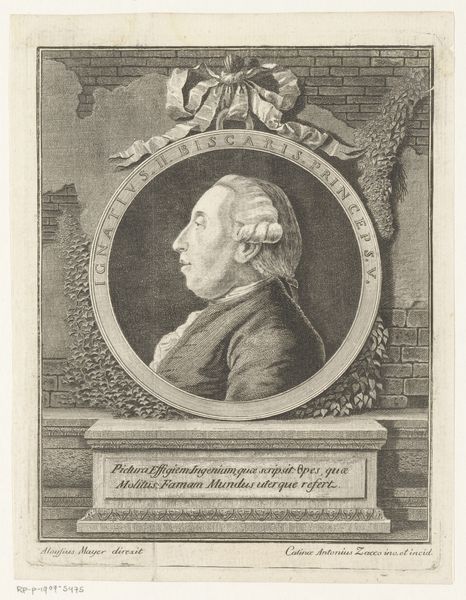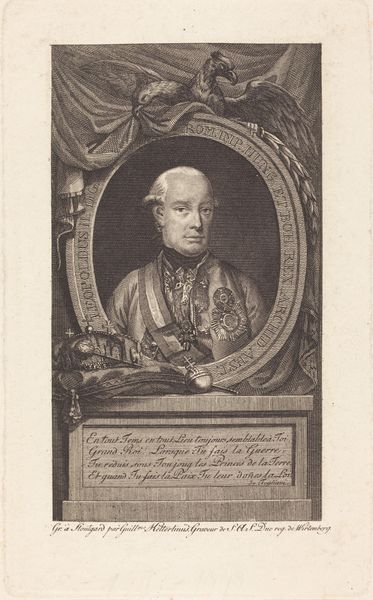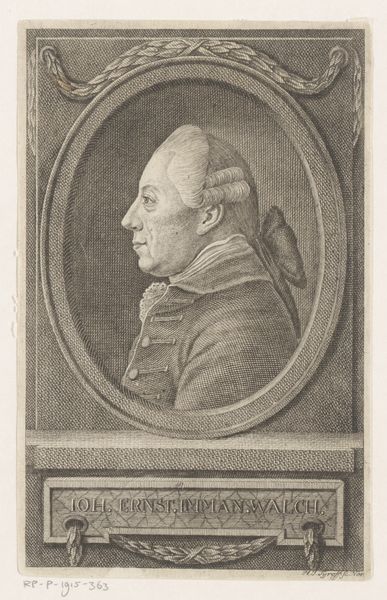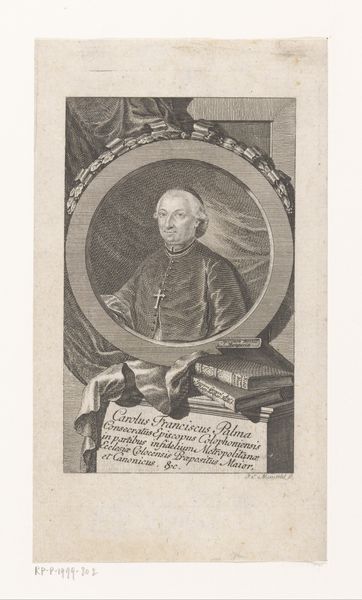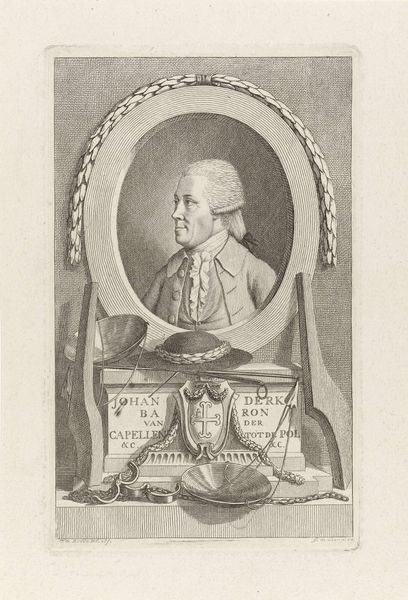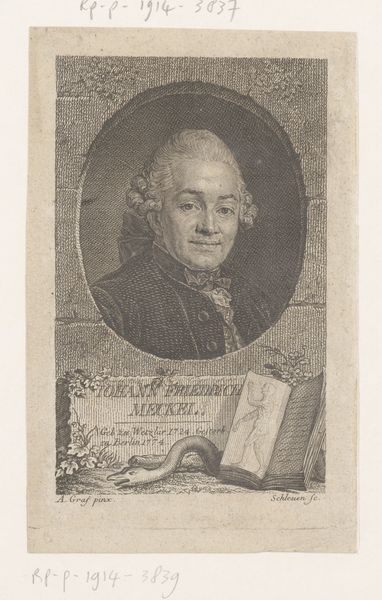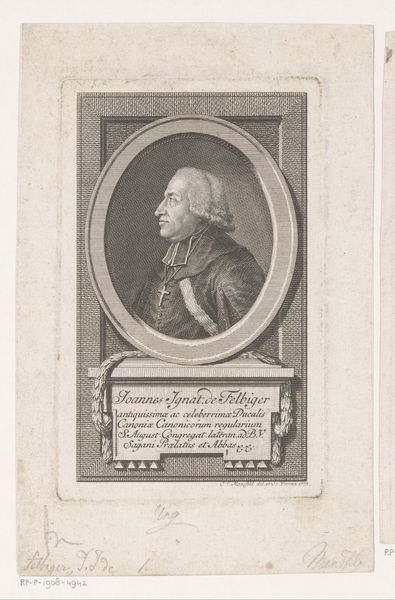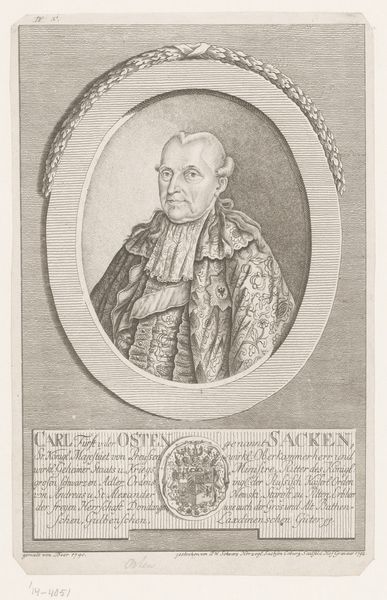
Copyright: National Gallery of Art: CC0 1.0
Curator: Let's take a closer look at this engraving titled "F.E. von Rochow" created in 1777 by Daniel Nikolaus Chodowiecki. Editor: The precision of the lines is immediately striking. It feels incredibly detailed, almost surgical in its execution, lending it a formal and dignified air. Curator: Chodowiecki was a master engraver, very popular in his time. What’s fascinating is how portraiture served specific social functions then, solidifying status and reinforcing hierarchies. Rochow, as the inscription makes clear, was an "Erbherr," a hereditary lord. Editor: You can really see the care taken in rendering the texture of his coat and wig. It makes you consider the engraver's skill but also how such items functioned as visible signs of wealth and power. The way material signifiers work in this social portrait feels key. Curator: Precisely! These engravings were often commissioned by or for the portrayed individual, shaping their public image and legacy. The open book and the sculpted tableau below the portrait suggest his learnedness and piety too. Editor: That little tableau! It feels interesting that the sacred is being presented alongside the worldly book, implying values considered useful to reinforce that social structure. The print, considered materially, functions in this era as both devotional and social utility. Curator: And, let's not forget the context: this piece appeared on the cusp of immense social upheaval, with revolutions brewing. Artists like Chodowiecki walked a fine line, producing works for the establishment but sometimes hinting at social critique through irony or subtle visual cues. Editor: Looking at this now, you start to understand the weight of what images like this would mean at the time. Every line and shade contributed to the overall purpose of this image's intended labor. It shows how complex even an apparently straightforward portrait could be. Curator: Absolutely. The print becomes more than just a depiction of a man; it’s a microcosm of 18th-century society. Editor: Yes, examining this print underscores the intertwined relationship of labor, image, and authority inherent in 18th-century material production and how social image-making often has direct functions in the cultural system.
Comments
No comments
Be the first to comment and join the conversation on the ultimate creative platform.
